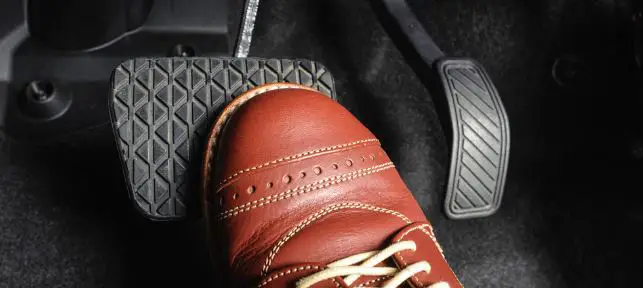Stab braking is a term used in the automotive world, and it’s not as dangerous as it sounds. Stab braking is a technique that can be used to slow down your car quickly and safely, and it’s something that all drivers should know how to do. In this blog post, we’ll explain what stab braking is, how to do it correctly, and when you shouldn’t use it.
Modern Braking Systems
The anti-lock braking system is a safety feature in many modern vehicles. When the brakes are applied, Electronic sensors detect how quickly the wheels are slowing down. If the sensors detect that the wheels are about to lock up, they signal the ABS pump to rapidly apply and release brake pressure at each wheel. This prevents the wheels from locking up, and helps the driver maintain control of the vehicle.
Most cars on the road today have some form of anti-lock braking system, or ABS. This technology first became widely available in the 1980s, and it has since become standard equipment on most new vehicles.
But do all cars have ABS?
The answer is no. Some older model cars may not be equipped with ABS, and some newer model cars may have it as an optional extra that can be added at an additional cost. In general, though, most cars sold today come with ABS as a standard feature.
What Does Stab Braking Mean?
The most common cause of wheels locking up while braking in a car without an ABS system is human error. When the driver panics and presses the brake pedal too hard, the brakes can overheat and lock up. This is more likely to happen if the brakes are already hot from heavy use, such as going down a long, steep hill. If the road is wet or icy, it increases the chances of the brakes locking up.
ABS systems help prevent wheels from locking up by automatically regulating the pressure on the brakes so that they don’t overheat
Stab braking ( or Cadence braking as it is also called ) is a technique that can be used in a car that doesn’t have an ABS system. This braking technique is a great way to maintain control of your car and avoid skidding. However, it should only be used in emergency situations.
How To Perform The Stab Braking Technique
If you don’t have an ABS system in your car, stab braking is a great way to stop quickly in an emergency. Here’s how it works:
-Depress the brake pedal quickly
-Just before the wheels lock up, release the pedal
-Repeat as necessary
Stab braking is a great way to maintain control of your car and avoid skidding. However, it should only be used in emergency situations. If you’re not comfortable with the technique, make sure to practice it beforehand so that you are familiar with the procedure.
Does Stab Braking Damage The Brakes On A Car?
A lot of people think that stab braking – where you slam on the brakes hard in an emergency situation – can damage your car’s braking system. However, this is not necessarily true. While it is true that repeated hard braking can wear down your brakes and decrease their lifespan, one instance of hard braking is not going to cause any significant damage.
So, if you find yourself in a situation where you need to brake hard and use the stab braking technique, don’t hesitate! Your car’s brakes are designed to handle occasional instances of hard braking, and they won’t be significantly damaged by it. Just be sure to keep an eye on your brake pads and make sure they are replaced when necessary. Repeated hard braking will eventually take its toll, but one instance is not going to cause any harm.
When Should You Not Use A Stab Braking Technique?
Stab braking is not effective when the road surface is wet or icy, as the tires can lose traction and cause the car to skid. It is also not recommended to use this technique on bald or damaged tires. If you must brake hard on a slippery surface, pump the brakes lightly instead of applying constant pressure. Stab braking can also be dangerous if done too abruptly, as it can cause the car to fishtail or spin out of control.
You should also never use the stab braking technique in modern cars with ABS systems in place. If you were to try the stab braking technique in a car with ABS, you would end up pumping the brakes yourself – which is exactly what the ABS system is designed to do. In other words, there’s no need to pump the brakes yourself when you have an ABS system – it will do it for you!
Summary
It is important to prevent the wheels from locking up while performing an emergency brake in a car for several reasons. First, if the wheels lock up, the car will skid. Skidding decreases the effectiveness of the brakes and increases stopping distance. Second, locked wheels can cause the car to veer off course. Finally, locked wheels can cause damage to the tires and brake system. To prevent the wheels from locking up, drivers should use the stab braking technique in cars without ABS systems when it is safe to do so.
If your car already has an ABS system installed, it is best to leave the computer to do the work for you to prevent the wheels from locking in emergency situations!
Safe Driving!
Go Home








